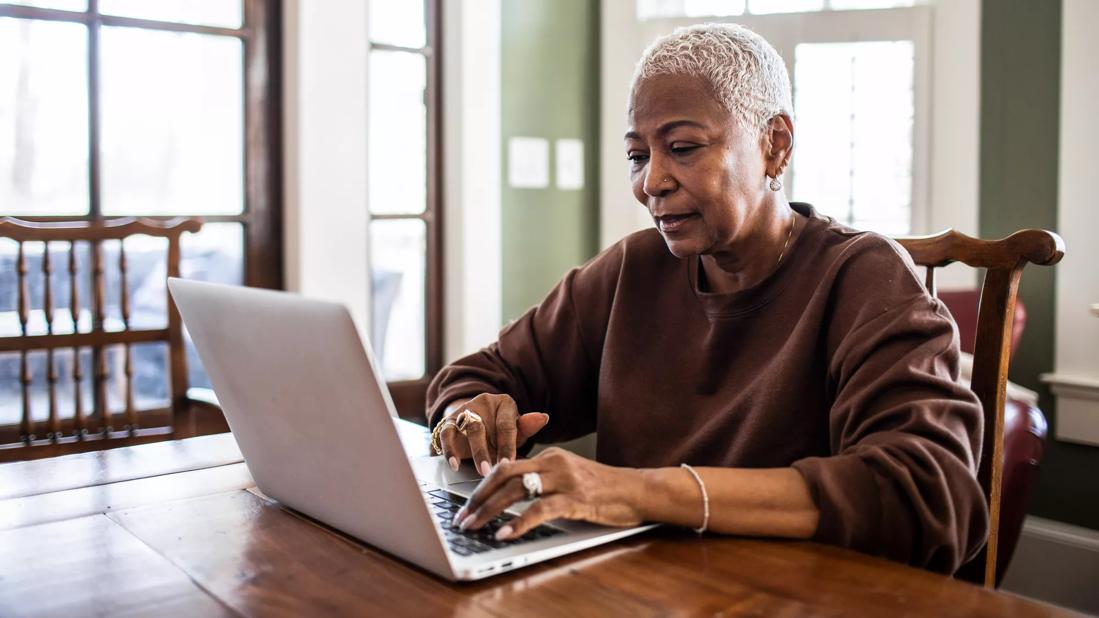6 tips to help you focus and stay connected when you’re working from home

Things are moving and changing quickly with the news of COVID-19. As healthcare institutions grapple with changing guidelines and social distancing, such as the American College of Surgeons’ recommendation that elective surgeries be postponed, you may be asked to provide virtual care from home or attend to administrative tasks temporarily.
Advertisement
Cleveland Clinic is a non-profit academic medical center. Advertising on our site helps support our mission. We do not endorse non-Cleveland Clinic products or services. Policy
Telecommuting presents a unique set of challenges, especially for those who have never done it before or who don’t know how long it will last. Physical therapist Mary Morrison, PT, DScPT, gives strategies on how to keep your healthy habits and productivity in check while working remotely.
It might be tempting to roll directly out of bed and onto the couch to start checking email, but you’ll need to establish a schedule when it comes to working from home. Set an alarm clock, eat breakfast, take a shower and get dressed as if you were actually going into work. You may not have to put on a suit or don a white coat, but you’ll need to treat the day like any other day at the office, minus the office. Determine regular working hours and factor in breaks and meal times.
It can be tempting to work from your bed, but it’s important to set boundaries when it comes to remote work. For some people, boundaries mean no TV and making sure the kids or pets are in a separate room. Working from home also means you’ll have to fight off distractions of other things you’ll be tempted to do around the house. If you find yourself easily distracted, you might be someone who needs to set firmer boundaries when it comes to working from home. Set up a desk area where you’ll aim to spend the majority of your day and stock this area with everything you’d find back in the office. Position your desk and chair so that your spine is aligned and make sure your chin is pointed straight ahead. If you prefer, ditch the chair altogether and opt for a standing desk – whatever set up will make you feel more productive and ready to work.
Advertisement
Write out a daily and weekly to-do list involving your work and everything that needs to get done. You’ll feel better prepared knowing what’s ahead and having some sort of game plan for tackling it.
It can be tempting to work for hours at a time without taking a break, especially if you’re comfortable with where you are. But it’s important to establish regular breaks throughout the day (and also to schedule your workouts). Mary suggests setting a timer every hour to remind you to get up and move or stretch. It’s important to focus on active stretching for your lower and upper back since you’ll likely be working on a laptop with a smaller screen. Try movements like warrior one and other hip flexor stretches. If you’re feeling particularly stir crazy, opt for a quick walk around the block. Another tip: try your best to not eat at your desk.
Working from home can sometimes be isolating. Check-in with people often, even if you don’t have a specific work-related question. Text friends or colleagues throughout the day (but be careful not to get too distracted with your phone) and schedule video calls when possible. Virtual connections will never replace the importance of face-to-face interaction, but it can help make you feel like you’re more than just out there in the void. Also make sure you’re touching base with your boss or employees. Telecommuting thrives when there’s an emphasis on trust and communication. Plus, regular check-ins with your team can help identify priorities and potential obstacles and keep people accountable.
Advertisement
Shut down and stop working when you’d normally leave the office. Just as you established your regular working from home hours and routine, determine when you’ll stop working for the day. And although it can be challenging in our 24/7, always connected world – you’ll need a good work-life balance even more since your work is now home with you all day.
Advertisement
Advertisement

Patients report improved sense of smell and taste

Clinicians who are accustomed to uncertainty can do well by patients

Unique skin changes can occur after infection or vaccine

Cleveland Clinic analysis suggests that obtaining care for the virus might reveal a previously undiagnosed condition

As the pandemic evolves, rheumatologists must continue to be mindful of most vulnerable patients

Early results suggest positive outcomes from COVID-19 PrEP treatment

Could the virus have caused the condition or triggered previously undiagnosed disease?

Five categories of cutaneous abnormalities are associated with COVID-19